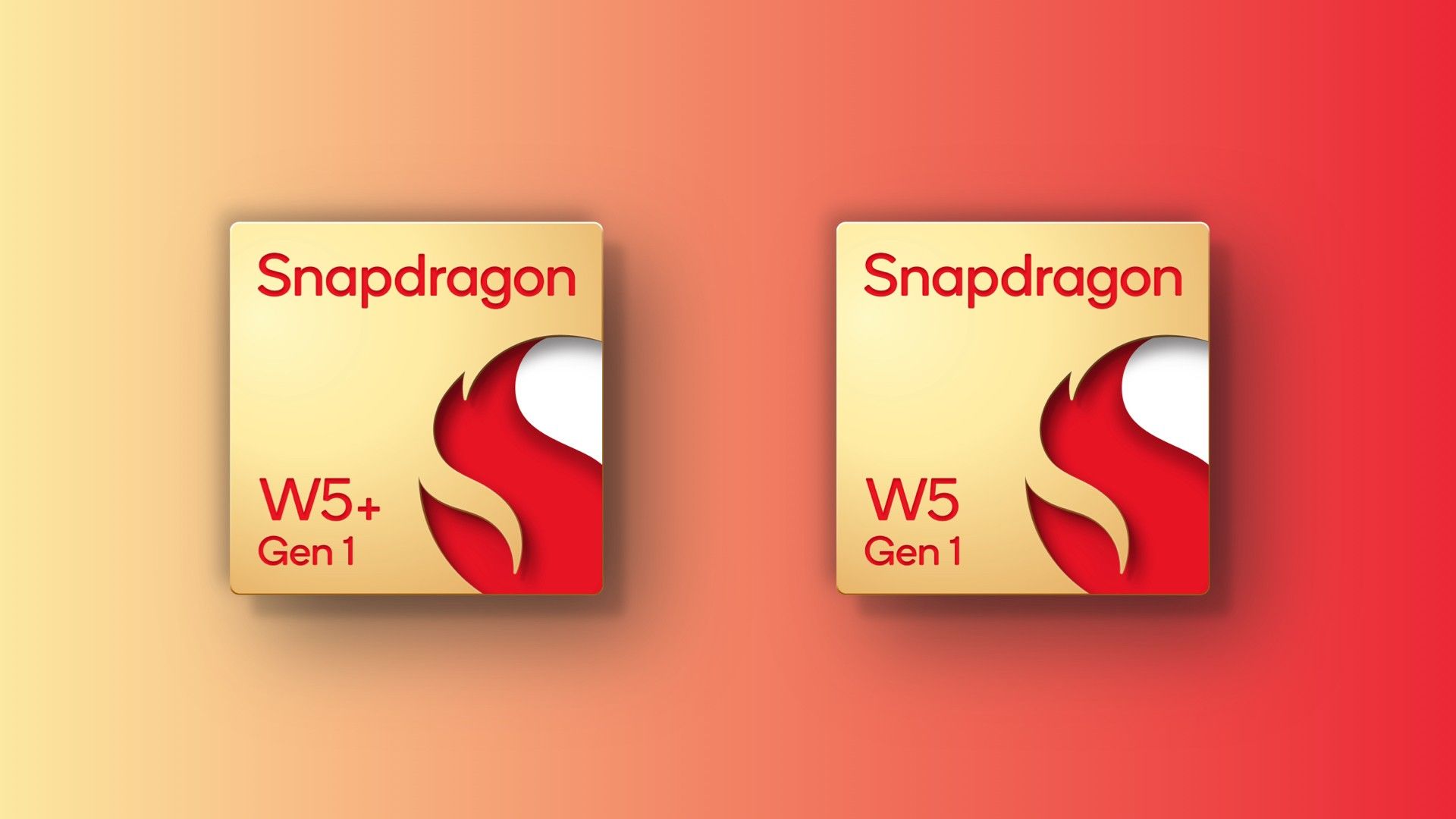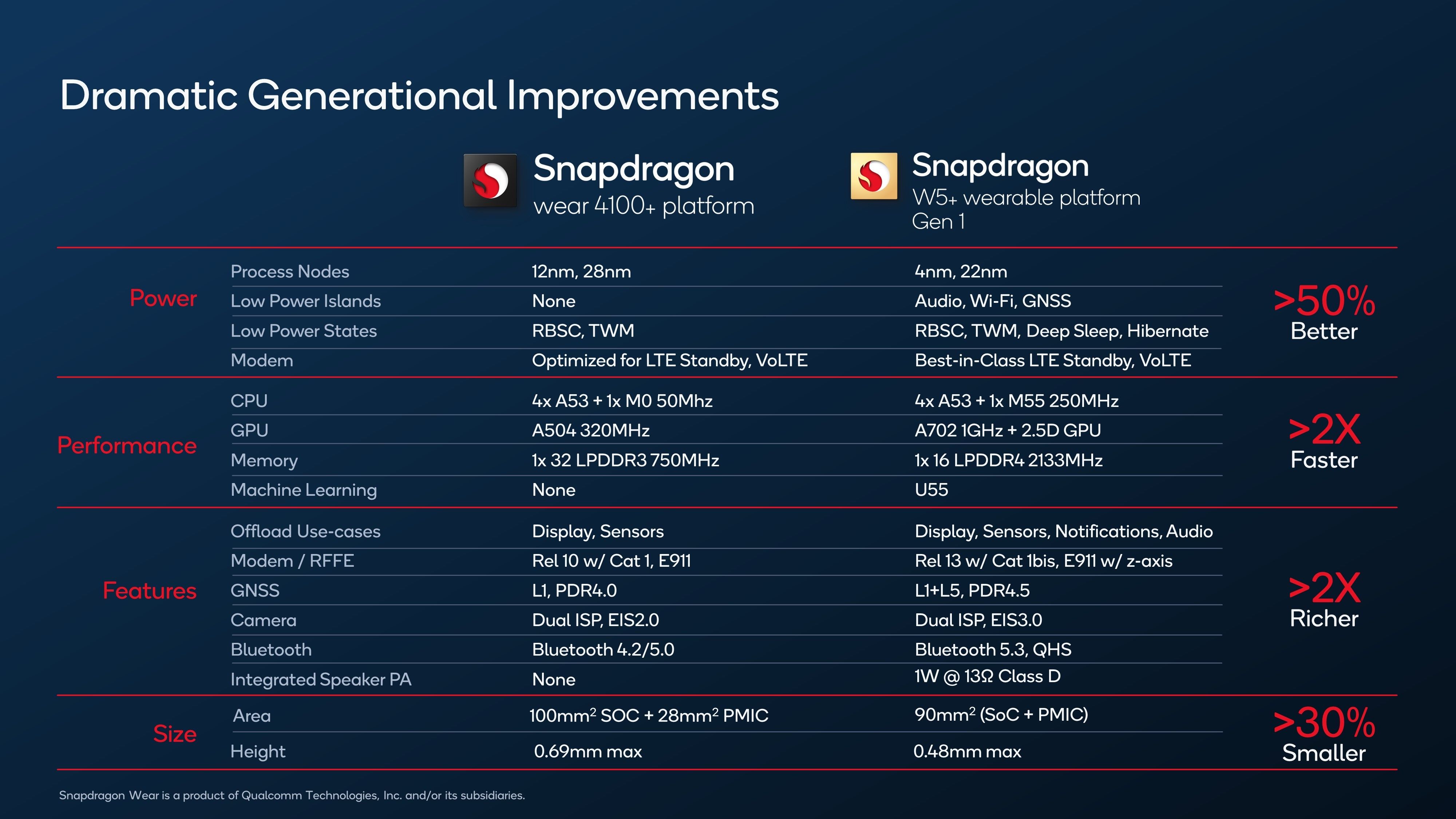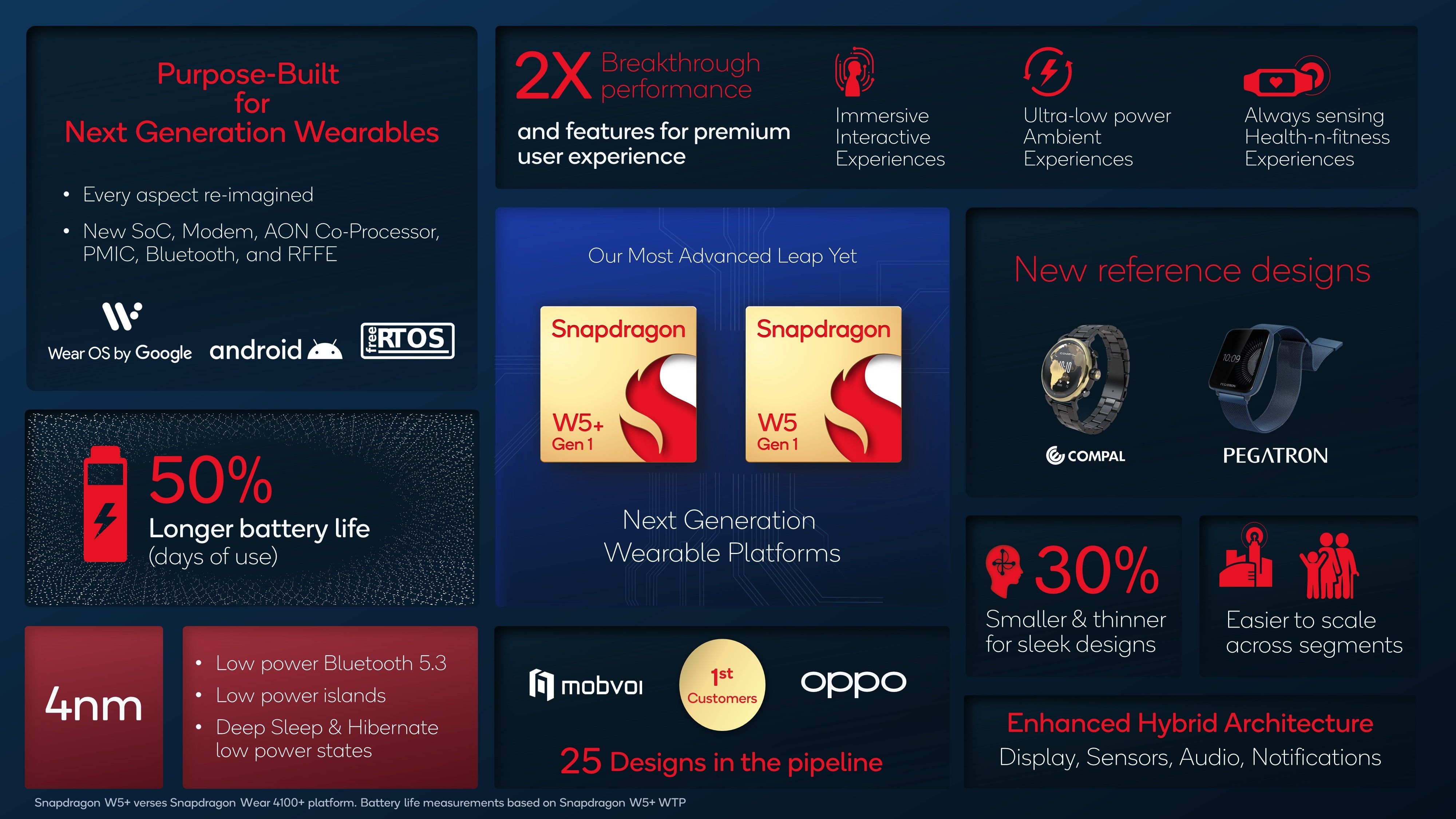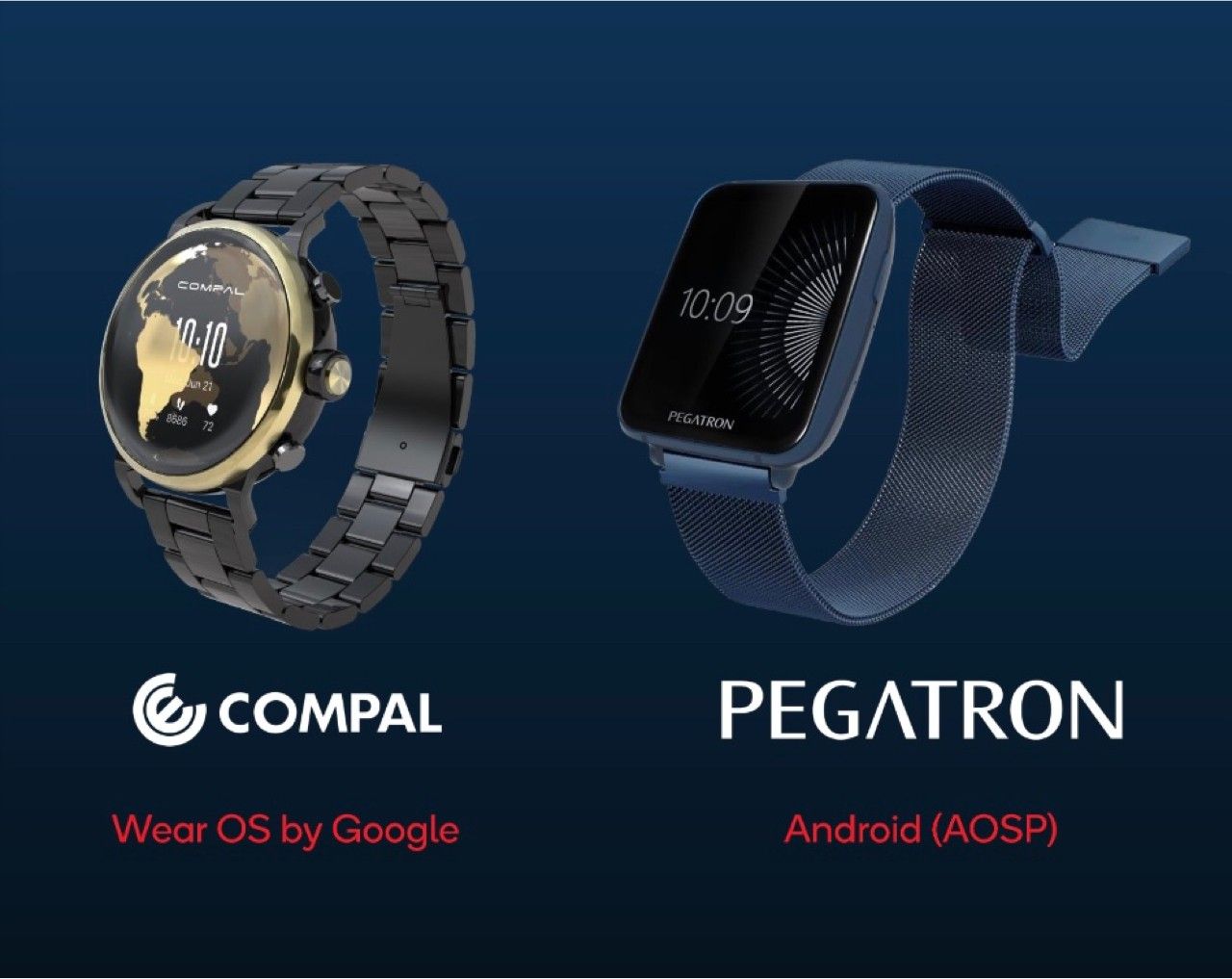Qualcomm today unveiled the next generation of SoCs for wearables, the Snapdragon W5 Plus Gen 1 and Snapdragon W5 Gen 1. The company says that the new chipsets have been redesigned from the ground up and have been brought under the same naming structure as the flagship mobile processor. The Snapdragon W5 Gen 1 succeeds the 2020's Snapdragon Wear 4100 platform, and the company promises 50% lower power consumption, two times higher performance, 2x richer features, and 30% smaller size compared to the previous generation.
Qualcomm Snapdragon W5 Plus Gen 1: Specifications
|
Specification |
Qualcomm Snapdragon W5 Plus Gen 1 |
|---|---|
|
Architecture |
4nm |
|
CPU |
4x Cortex-A53 1.7GHz |
|
GPU |
A702 1GHz |
|
Memory |
16GB LPDDR4 |
|
Machine learning |
ARM Ethos-U55 |
|
Bluetooth |
Bluetooth 5.3 |
|
Modem |
Release 13 LTE, Cat 1 bis |
The Snapdragon W5 Plus Gen 1 chipset is based on the much newer 4nm node process architecture. It is a giant leap forward compared to the Snapdragon Wear 4100+, which used a 12nm node process architecture. As for the specifics, Snapdragon W5 Plus Gen 1 features a quad-core ARM Cortex-A53 CPU clocked at 1.7GHz. While Cortex-A55 would have given the chipset a huge advantage over the previous gen, the new architecture coupled with the quad-core Cortex-A53 CPU should deliver a much-needed performance boost.
Source: Qualcomm
In addition to the new CPU, the SoC also comes with a new 22nm-based always-on co-processor. The new Cortex M55 co-processor on the chipset is also based on the newer architecture compared to the previous generation. Qualcomm says that it has managed to improve the operations the co-processor can perform all while decreasing power consumption. When you're not interacting with the smartwatch, the co-processor can now handle tasks like always-on display, music, notifications, fitness tracking, sleep tracking, and more.
The new chip also comes with 1GHz Adreno 702 GPU (that enables 3D watch faces, 3D maps navigation, and 1080p video streaming), LPDDR5 RAM (vs. LPDDR3 on the Wear 4100+), and a new U55 machine learning chip — something that wasn't present on the Wear 4100+ SoC. Coupled with a faster Wi-Fi chip, Bluetooth 5.3, and a "best-in-class" LTE modem, Qualcomm Snapdragon W5 Plus Gen 1 does seem like a huge upgrade over the previous generation.
Source: Qualcomm
While performance gains are nice to have, battery life was one of the main concerns of the Wear 4100+ smartwatches. Qualcomm is addressing those issues with the Snapdragon W5 Plus Gen 1. The company claims that smartwatches with a 300 mAh battery and W5 Plus Gen 1 could offer up to 43 hours of battery life, while smartwatches with a 600 mAh battery could offer up to 3 days of use. There are new Deep Sleep and Hibernate modes as well. These modes help by drastically reducing the power consumption, thus extending the battery life.
While Qualcomm did unveil the regular Snapdragon W5 Gen 1 chip alongside the Plus variant, it didn't reveal a lot of details about the regular W5 Gen 1 chip. Instead, it says that the W5+ Gen 1 will be the go-to chipset for "mainstream smartwatches," while the W5 Gen 1 is reserved for "segment-specific wearables", which include kid and senior-focused watches and other health wearables.
First smartwatches with Snapdragon W5/W5 Plus Gen 1 chip
Source: Qualcomm
Qualcomm has announced that OPPO and Mobvoi will be the first manufacturers to launch smartwatches with the new Snapdragon W5 Gen 1 and W5 Plus Gen 1 platform. OPPO will unveil its Watch 3 with Snapdragon W5 Gen 1 next month while Mobvoi will launch its next-gen TicWatch flagship smartwatch with the Plus variant of the chipset in the fall.
To fasten up the process, Qualcomm has also announced two reference designs in partnership with Compal and Pegatron. Qualcomm says that the reference design will not only showcase the capabilities of the new platform, but it will also allow OEMs to develop products faster. While the next-generation Samsung Galaxy Watch lineup and even the Google Pixel Watch are said to use the Exynos W920 processor, the new Qualcomm chipset could convince the companies to switch to their offering in the future.




